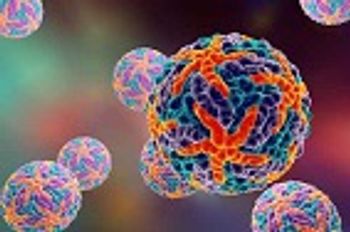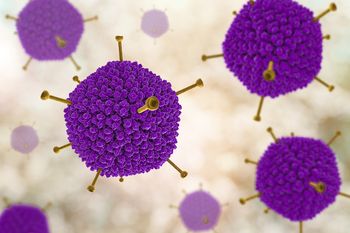
Investigators compared an antibiotic monotherapy and a combination therapy for MSSA bacteremia and found that both had similar results, raising the call for new treatment options.

Investigators compared an antibiotic monotherapy and a combination therapy for MSSA bacteremia and found that both had similar results, raising the call for new treatment options.

Patients who believe themselves to be at a high risk of contracting HIV are more likely to accept pre-exposure prophylaxis (PrEP) than their peers. That’s one key finding from a new study that looked at how individual factors affect PrEP uptake.

Investigators have detected the presence of Ebola in a bat in Liberia, revealing more about how bats serve as reservoirs for the deadly pathogen.

Merck has received a Breakthrough Therapy Designation for investigational 15-valent pneumococcal conjugate vaccine V114.

New research has suggested that Alzheimer disease pathology may be driven by an infectious agent, Porphyromonas gingivalis.

Health system continues to lead the way in stewardship; hopefully more will follow.

A new analysis sheds light on what is needed to hit this benchmark.

Thomas Lodise, PharmD, PhD, explains the economic burden of community-acquired pneumonia as well as the associated risks that accompany currently available treatment options.

A new study identifies several easy-to-adopt strategies that can help individuals to remember to take PrEP at roughly the same time every day.

TAK-003, being developed by Takeda, is a tetravalent vaccine based on a live-attenuated dengue serotype 2 virus, which provides the genetic “backbone” for all 4 virus serotypes.

A new guideline on the management of gonorrhea has been issued by the British Association for Sexual Health and HIV.

Investigators followed a pediatric cohort in Nicaragua over the course of 15 years and found that dengue fever immunity offers some protection against symptomatic Zika disease.

In theory, investigators now have the tools to edit a patient’s genes to fight HIV. However, there’s a big difference between potential and reality.

Giving an influenza vaccine to hospitalized patients prior to discharge might also be the only opportunity to vaccinate those patients.

We’ve rounded up a list of important US Food and Drug Administration (FDA) and US Department of Agriculture (USDA) recalls from this past week.

Eleven cases of Salmonella Typhimurium have been reported in a multistate outbreak with a suspected link to contact with hedgehogs.

Stay up-to-date on the latest infectious disease news by checking out our top 5 articles of the week.

CDC reports that 81 individuals brought measles into the United States following a trip to another country in 2018.

Investigators in the United Kingdom are closer to understanding how a 5% genetic difference between global Salmonella and a virulent strain of African Salmonella which leads to nearly 400,000 deaths each year in sub-Saharan Africa.

Are surgical pens giving insight into unknown contamination in the OR?

Women living in or traveling to Africa and the Middle East should take precautions and avoid contact with mosquitoes and livestock.

Tests revealed similar genome type—the potentially lethal 7d variant—among cases despite various facilities of origin.

A clinical trial is underway evaluating whether the vaccine candidate ID93 + GLA-SE can induce immune responses to prevent against reinfection and reactivation of TB.

The FDA has permitted the marketing of a new test designed to aid in the diagnosis of Mycoplasma genitalium a sexually-transmitted infection.

WHO has compiled a list of the top 10 threats to global health in 2019 and 6 of them are infectious disease-related.

The FDA has approved the use of the 0.5 mL dose of Fluzone Quadrivalent influenza vaccine to include children age 6 through 35 months.

The sNDAs will seek approval for the use of doravirine and doravirine/lamivudine/tenofovir disoproxil fumarate in individuals with HIV-1 whose virus is suppressed and are switching from a stable antiretroviral regimen.

A study of the approach worked wonders in China, but it may not effectively shift the burden of costs associated with testing in the US.

As the government shutdown passes the 1-month mark, Contagion® investigates how it is affecting public health agencies.

Applying hospital-based outbreak tools helped researchers identify a community MRSA outbreak